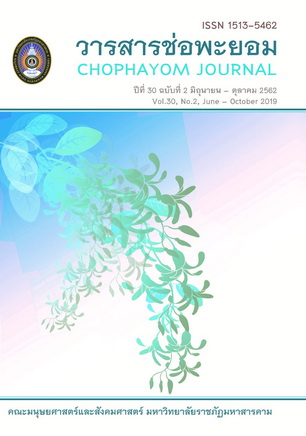Spa Choice Behavior of Thai Tourists in Koh Samui, Surat Thani Province
Keywords:
Behavior, Spa, Tourist, Koh SamuiAbstract
The purpose of this research was to investigate the spa choice behavior of Thai tourists in Koh Samui, Surat Thani province. The sample for this research was 400 Thai tourists, collected by accidental sampling technique. The data collection tool was the closed-ended questionnaires. The reliability test of the whole questionnaire was 0.955. Frequency, percentage, mean, and standard deviation were used to analyze the data. The results revealed that most respondents were females aging 30 – 39. They made their own decision of using spa services for relaxing and anxiety reduction, without a plan in advance. The study revealed that, in term of spa selection, the tourists mostly made a decision based on physical evidence, followed by the
staffing, price, service process, location or distribution channel, product, and marketing promotion
respectively. Cleanliness was the highest point to influence them. The spa room should have an aroma scents. Service with integrity, variety of services, available for advance booking, clearly mark price for spa service and discount for members were also the important points for selecting spa service. Keywords : Behavior, Spa, Tourist, Koh Samui
References
mots.go.th/more_news.php?cid=504&filename=index.
พิมพา หิรัญกิตติ. (2552). การวิจัยการตลาด. กรุงเทพฯ: Diamond in Business World.
ละอองทราย โกมลมาลย์. (2556). ปัจจัยที่มีอิทธิพลเชิงบวกต่อความพึงพอใจของลูกค้าผู้ใช้บริการสปาในเขตคลองสาน จังหวัด
กรุงเทพมหานคร. วิทยานิพนธ์ปริญญาบริหารธุรกิจมหาบัณฑิต สาขาวิชาการตลาด มหาวิทยาลัยกรุงเทพ.
สุณีย์ ล่องประเสริฐ. (2557). การพัฒนามาตรฐานธุรกิจสปาในอำ เภอเกาะสมุย จังหวัดสุราษฎร์ธานีสู่ประชาคมเศรษฐกิจ
อาเซียน. วารสารวิทยาการจัดการ, 1(1), 125-141.
อรทัย จันทรโร, สุณีย์ ล่องประเสริฐ และ นันทวรรณ ช่างคิด. (2559). พฤติกรรมการเลือกใช้บริการสปาของนักท่องเที่ยวในจังหวัด
สุราษฎร์ธานี. วารสารราชภัฏสุราษฎร์ธานี, 3(1), 185-205.
Chieochankitkan, A. (2013). Developing Service Quality for Spa Establishments in the Active Beach Tourism Cluster, Thailand. Dissertation of the Degree of Doctor of Philosophy in Integrated Tourism Management. National Institute of
Development Administration.
Chieochankitkan, A. & Sukpatch, K. (2014). The Customers’ Perception of Service Quality for Spa Establishments in
the Active Beach Tourism Cluster, Thailand. Silpakorn University Journal of Social Sciences, Humanities, and Arts, 14(3), 53-75.
Hirankitti, P., Mechinda, P. & Manjing, S. (2009). Marketing Strategies of Thai Spa Operators in Bangkok Metropolitan.
Proceeding of the International Conference on Applied Business Research ICABR.
Kandampully, J. (2002). Innovation as the Core Competency of a Service Organization: the Role of Technology, Knowledge and Networks. European Journal of Innovation Management, 5(1), 18-26.
Klaysung, C. (2016). Behaviors and Factors Affecting the Selection of Spa Services among Consumers in Amphawa, Samut Songkhram, Thailand. International Journal of Social and Business Sciences, International Scholarly and
Scientific Research & Innovation, 10(12), 3897-3901.
Krejcie, R. V. & Morgan, D. W. (1970). Determining Sample Size for Research Activities. Educational and Psychological Measurement, 30(3), 607-610.






